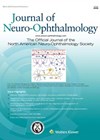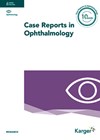You searched for "acetazolamide"
Referral patterns and pathways for intracranial hypertension
29 March 2024
| Lauren R Hepworth
|
EYE - Neuro-ophthalmology
The authors present a retrospective case review of individuals with suspected raised intracranial pressure (ICP) over a 12-month period a single tertiary neuro-ophthalmology centre. Cases were categorised into four groups based on examination by neuro-ophthalmology; 1) referred after identification of...
A closed angle seldom comes alone
1 June 2017
| Lei-Ai Lim
|
EYE - Glaucoma
Case report An 89-year-old lady with dementia was referred to me out of hours by her GP with a few days history of an angry looking left eye for suspected elevated intraocular pressure (IOP). I discovered that this lady first...
Idiopathic intracranial hypertension (IIH)
IIH is a medical condition where the intracranial pressure (ICP) is raised without an obvious cause. The cerebrospinal fluid (CSF) is produced in by the choroid plexus in the lateral ventricles and the roof of the third and fourth ventricles,...Retinal vascular occlusion from gentamicin injection post-vitrectomy
4 February 2021
| Annes Ahmeidat
|
EYE - Vitreo-Retinal
The authors present two case reports for the rare, but serious, complication of retinal vascular occlusion as a presumed result of subconjunctival injection following 25-gauge vitrectomy. Risk factors for the complication include: cardiovascular disease, retrobulbar anaesthesia, high intraocular pressure (IOP)...
Understanding spaceflight-associated neuro-ocular syndrome (SANS): what do we know?
Introduction Formerly known as visual impairment and intracranial pressure syndrome (VIIP), space-related neuro-ocular syndrome (SANS) is defined by a collection of ophthalmic and neurological findings in astronauts after long-term spaceflight [1]. Changes in the eyeball, such as hyperopic shift, during...The results of the last survey Jun 2020
Firstly, my sincere thanks to those of you who responded to last edition’s survey. We had a record response. Laser was never my most exciting clinical treatment, but in this environment how I wish for even that degree of patient...Warfarin Induced Suprachoroidal Haemorrhage Presenting as Acute Angle Closure Glaucoma
1 February 2014
| Shampa Gupta, Kashif Ali
Spontaneous suprachoroidal haemorrhage is a rare but recognised entity. Anticoagulant therapy is a well known risk factor. We describe a case of warfarin induced suprachoroidal haemorrhage presenting as acute angle closure glaucoma in a patient with raised International Normalised Ratio...
What not to miss in neuro-ophthalmology Part 2
1 August 2018
|
EYE - Neuro-ophthalmology
As mentioned previously there are several conditions in neuro-ophthalmology that should not be missed by the general ophthalmologist as well as ophthalmology trainees. We discussed in the first part some of these conditions including third cranial nerve palsies, giant cell...
Under pressure: a tool to aid the non-ophthalmic practitioner in the timely management of acute angle closure
Acute angle closure is a true ophthalmic emergency that mandates timely diagnosis and treatment. The priority in initial management is to lower the intraocular pressure in an expeditious matter using medical treatments. The risk of irreversible glaucomatous optic neuropathy is...Time is vision in central retinal artery occlusion
Central retinal artery occlusion (CRAO) is a rare but devastating vascular episode that can have severe impact on vision. Treatment is very time-limited and needs to be initiated very quickly to salvage any vision. The majority of patients present to...Acute management of retrobulbar haemorrhage
The authors discuss the importance of rapid diagnosis and correct management of acute RBH presentation to avoid the risk of permanent blindness. Retrobulbar haemorrhage (RBH) is an ocular emergency that occurs due to arterial bleeding in the orbital cavity behind...CALL TO ACTION: Ophthalmology on Myanmar / Thailand border: do you have any redundant kit?
29 June 2023
| Kate Claridge
|
EYE - General
In 1990, the late Doctor Frank Green, a consultant ophthalmologist in Aberdeen, along with Doctor Phillip Ambler, a GP with ophthalmic training, responded to an invitation to provide ophthalmic care for Karen refugees on the northern and eastern Myanmar borders....





